Banging pipes: What the pros should know
Correcting water hammer.
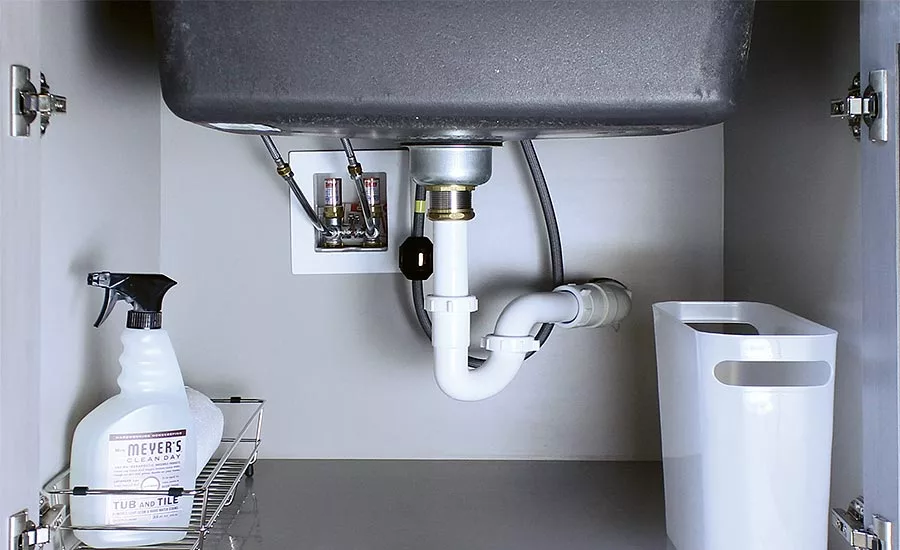
Oatey Quiet Pipes are used within MODA supply boxes for a sink application.
Loud, “banging” pipes — a customer complaint that professional plumbers know all too well. And if left untreated, they can have serious implications that result in complex plumbing system issues. Fortunately, banging pipes are a common problem that can be prevented and fixed rather easily.
What is water hammer?
A water hammer is a hydraulic shock in a piping system that occurs when water flow is stopped suddenly. When a valve or faucet is closed or turned off, the sudden change in the velocity (speed) of the flowing water creates kinetic energy and raises the pressure within the pipe. In other words, pressure resonates and creates waves inside the piping, resulting in a shuddering sound.
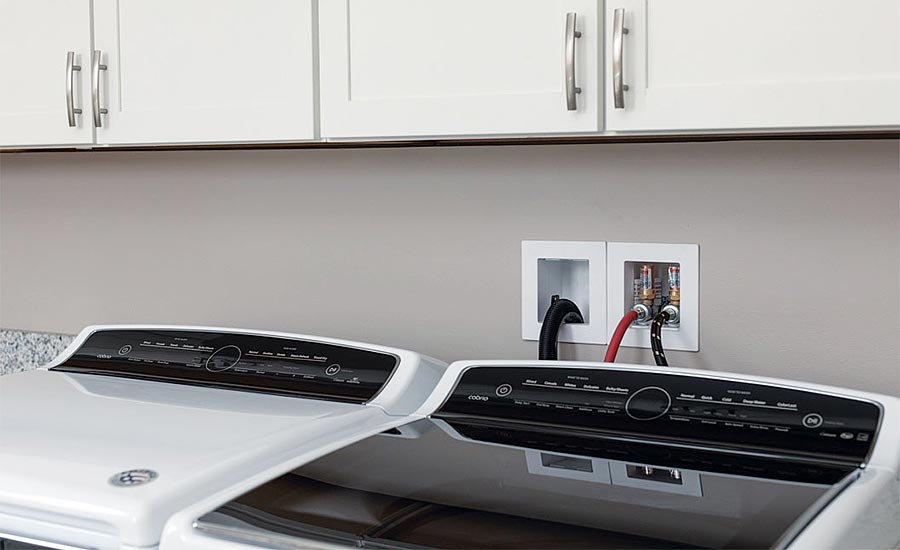
Oatey Quiet Pipes are used within MODA supply boxes for a laundry room application.
Common water hammer damage
Areas with high municipal water pressure entering a building are more prone to water hammer. Due to the high velocity at which water is traveling through the system, the rapid closure of a valve can produce a sudden change of motion and transfer energy throughout the system, putting extreme stress on joints and directional fittings. For these reasons, a system’s incoming pressure should be evaluated to ensure it does not exceed 80 psi (pounds per square inch); if it does, a pressure-reducing valve (PRV) should be installed to reduce the possibility of water hammer damage. Hammer arrestors should be used in conjunction with PRVs in these types of high-pressure areas or areas with frequent opening and closing of valves, such as shower diverters, washing machines, dishwashers and sensor-operated valves.
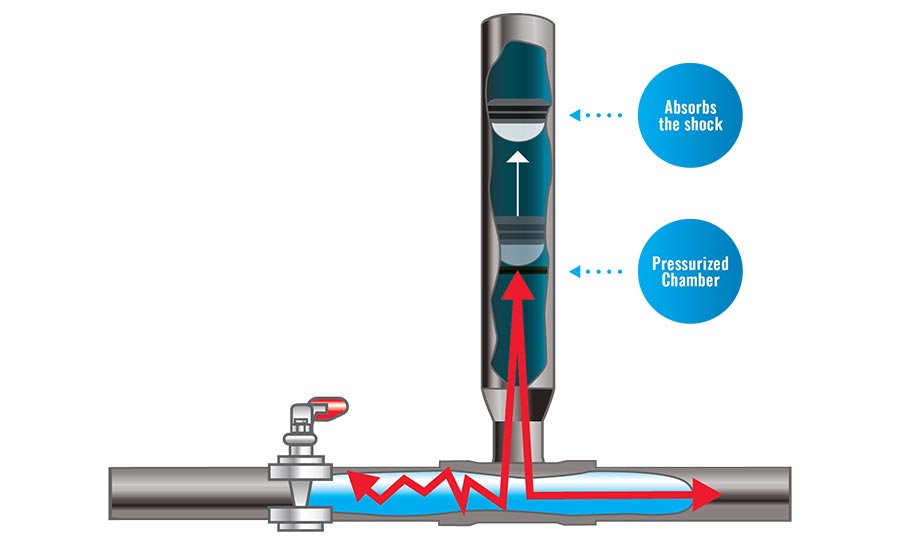
Assessing visible water lines
While water hammer is audible, the sound may be deceiving and not actually pinpoint the exact location of the issue (e.g., washing machine location). The sound may appear to be coming from the valve area, but could be a result of an unsecured pipe within the wall cavity. Once an audible water hammer sound is verified, check for any unsecured or loose supply lines/pipes making contact with a finished surface. Water hammer can be absorbed by any of these unsecured lines, resulting in partial-to-extreme movement — creating contact with adjacent surfaces. To prevent their touching surrounding building materials, pipes should be properly supported and/or insulated. Pipe that is not properly secured will move and cause a knocking or vibrating sound when coupled with even the slightest amount of water hammer.
Locate any internal or external holes that water lines pass through to see if, when gently pushed, the water lines touch the sides in any direction. Any water line that passes through a hole should have a support installed or expandable foam applied, which can also keep pests and insects from traveling through a hole. On large holes in wood plates, a combination of a j-hook and foam pipe insulation wrap can cushion them against any wood or drywall.
For new installations of water distribution systems, check with your local building officials to ensure individual lines are properly secured and insulated to reduce the possibility of water hammer.
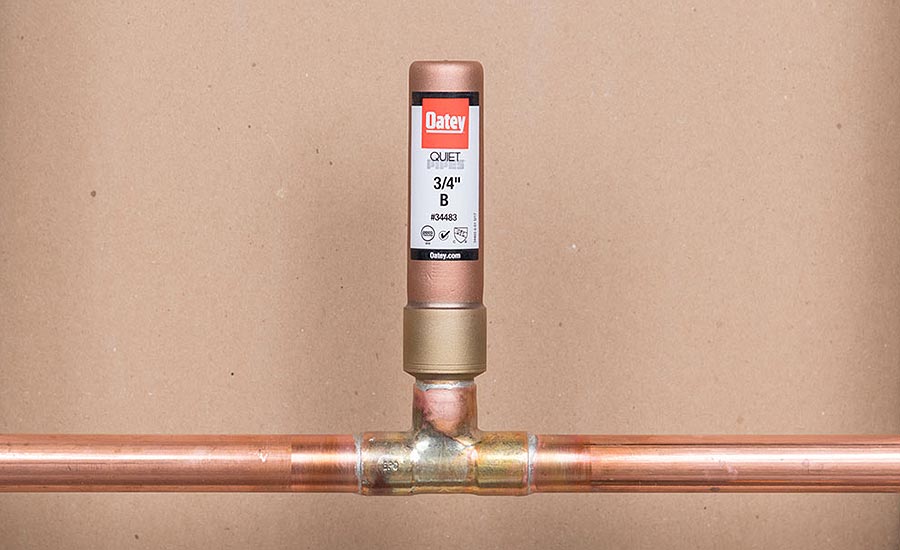
Oatey Quiet Pipes hammer arrestors are available for multiple or single fixture installations ranging in sizes from AA through F. Oatey hammer arrestors accommodate pipe connections that include CPVC, 1807 PEX, 1960 Uponor, copper (sweat and press), male iron pipe and compression applications.
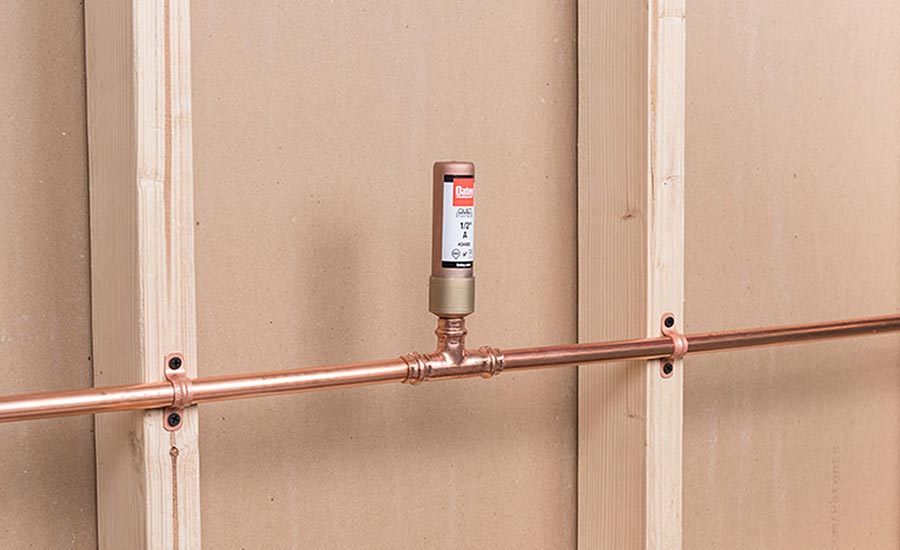 Oatey Quiet Pipe hammer Arrestors are gas filled and can be installed at any angle without affecting performance.
Oatey Quiet Pipe hammer Arrestors are gas filled and can be installed at any angle without affecting performance.
Solutions for water hammer
In the past, plumbers were required to install a 12-inch capped vertical riser (air chamber) off a fixture(s) supply run to dead end the line. As the system filled, this riser would fill with displaced air and create an air chamber. Soon after putting the system into service, it was discovered that the air within this chamber was replaced with water, and the only way to restore the hammer protection was to drain and refill the system on a continual basis. This inconvenient practice led to the modern-day hammer arrestor.
Water hammer arrestors feature a pressurized, sealed air chamber, which can be installed at any angle to absorb the shock of a quick-closing valve. The chamber then releases the pressure back into the system with the assistance of an internal piston. The internal piston creates a watertight/airtight seal to avoid any loss of air and prevent the chamber from filling with water.
Water hammer arrestors are available in sizes AA and A through F to protect any residential or commercial application, as well as for different connection types, including:
Straight connections
- CPVC (male or female);
- Copper sweat of press;
- PEX 1807 (crimp) and 1960 (cold expansion); and
- MIP (male iron pipe).
Tee connections
- PEX;
- Compression (in a variety of connection options); and
- 7/8-inch hose bibb connections.
To determine proper arrestor size and point of installation, you should primarily consider the distance from the horizontal branch line and the fixture units. According to the IPC, “A fixture unit is a measure of the probable hydraulic demand on the water supply by various types of plumbing fixtures used to size water piping systems. The water supply fixture-unit value for a particular fixture depends on its volume rate of supply, on the time duration of a single supply operation and on the average time between successive operations.”
In large water distribution systems, water hammer arrestors should be installed at the end of a vertical branch line between the last two fixtures being served at a distance up to 20 feet from the horizontal branch line. (Always check with the mechanical engineer to ensure additional protection is not required for your application).
For point-of-use applications, many municipalities require the use of arrestors near any quick-closing valves, such as dishwashers, washing machines and ice makers.
Other considerations
It is best to incorporate hammer arrestors into a plumbing design blueprint early on to prevent piping damage, failure and leaks in the future.
In addition, it is crucial to ensure proper sizing and placement of hammer arrestors; otherwise, they cannot perform correctly or attain their longevity. Incorrectly sizing a hammer arrestor by miscalculating fixture units or failing to follow a manufacturer’s installation recommendations could produce undesired results that do little to remedy a water hammer.
Looking for a reprint of this article?
From high-res PDFs to custom plaques, order your copy today!







